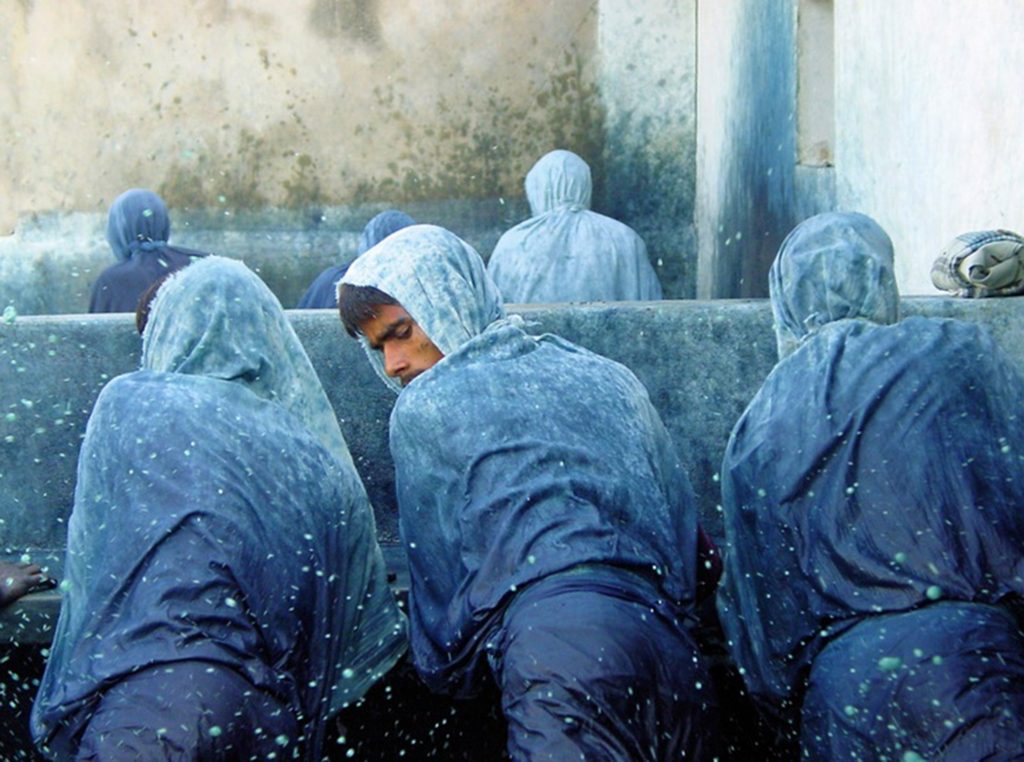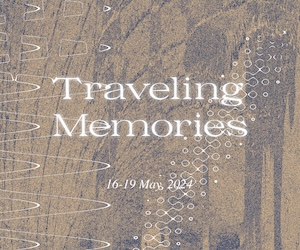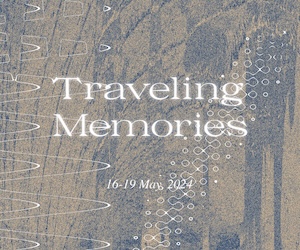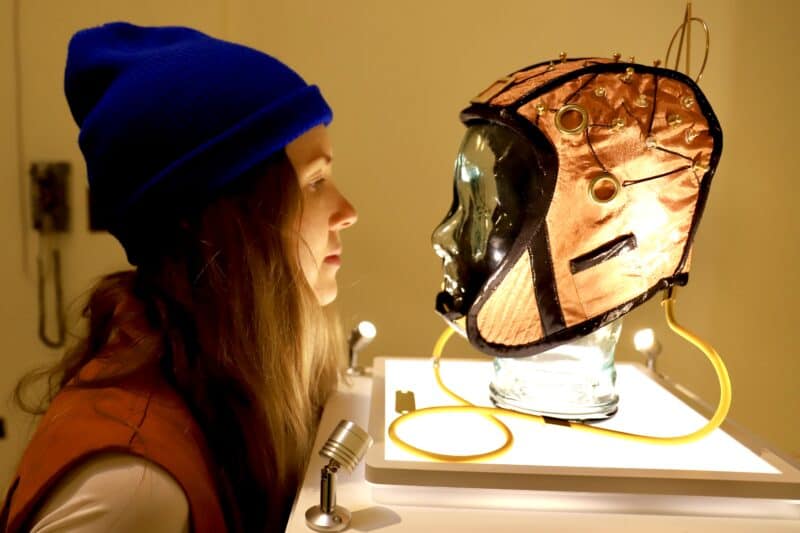State of Indigo – presented by the India Pavilion at London Design Biennale 2018 – will immerse viewers in the labour-intensive setting of the production of indigo, a pigment used to dye textiles, repel insects, cure ailments, disinfect, ward off spirits and even to decorate an entire city. The multi-sensory, immersive installation responds to London Design Biennale’s 2018 theme ‘Emotional States’for the Biennale’s second edition at Somerset House and is curated by Priya Khanchandani with the Gujral Foundation as Commissioning Body.

The installation features an archival film displayed across the walls of a Somerset House gallery, which transports viewers to the troughs used in indigo production. Filmed around two decades ago at one of the last farms in India to produce the natural dye, State of Indigo gives an insight into the demanding production methods that have gone largely unchanged for millennia. Workers are shown standing in a line thrashing the water with their outstretched legs, with the film highlighting the hours of hard labour required to produce only a small bar of concentrated dye. Through an emotional experience of this pigment, the installation will enable indigo to be understood more profoundly, by communicating its emotional charge and potency. The film will be accompanied by a sound installation comprising a rhythmic beat, allowing visitors to experience the installation.
The story of indigo is closely aligned with India’s design identity as well as its colonial past, although
both these aspects of its history are often overlooked today. As a natural form of the dye, indigo is a reminder of the traditional methods of cultivating and processing textiles that were pioneered on the subcontinent. Throughout history, the colour has been inseparable from notions of luxury and desire,
yet at the same time, it has strong links to exploitation. India cultivated indigo in large quantities from
the 1600s onwards, and farmers were exploited to grow and produce the dye, known as ‘blue gold’, under colonial rule to cope with rising international demand. State of Indigo brings these invisible histories to light and reveals indigo to be a highly ideologically loaded design tool, which needs to be asserted as being representative of India’s design identity.
“Although we take a cue from the past, the India Pavilion also alludes to significant issues of our time.
Since the historic moment we narrate, indigo has been democratised through its use in denim – a
product every visitor can relate to – and has become synonymous with the common man. I am
delighted to be working with the Gujral Foundation to bring to light the story of a colour that speaks of
broader issues about the state of India as a nation; its unspoken labour politics, coloniality and design
history”
, says Priya Khanchandani.
“In a time of extreme inequality, indigo-stained denim, albeit dyed synthetically today, is an example of how design has transformational qualities and that a luxury item like this pigment can become a ubiquitous and equalising force. It has been fantastic working with Priya to bring this complex issue toa global platform like London Design Biennale”,
says Feroze Gujral.
State of Indigo follows India’s successful 2016 presentation Chakraview at the inaugural edition of
London Design Biennale. The 2018 edition of the Biennale will include design installations from 40
countries, cities and territories from six continents. It celebrates the universal power of design and
explores the role of design in our collective futures.
State of Indigo India Pavilion at London Design Biennale 2018, Somerset House 4 – 23 September 2018 londondesignbiennale.com
About Priya Khanchandani:
Priya Khanchandani is a curator and writer based in London. She is the Editor of ICON Magazine. Priya specialises in the dissemination of ideas about contemporary design and Indian culture through writing, curating and arts management. Since 2011, she has published dozens of articles for publications ranging from Frieze, The White Review and Disegno to Bloomsbury’s Encyclopaedia of Design and has spoken at numerous festivals, conferences and on BBC Radio 4.
Priya’s degree in Modern Languages at Cambridge University, specialising in Renaissance Italy, inspired her interest in visual culture. She went on to train in the History of Design in a museum context by completing an MA at the Royal College of Art, where she was awarded a Distinction and the annual Dissertation Prize for her research on urban India now.
Previously she worked at the Victoria and Albert Museum on the acquisition of new objects and as Head of Arts Programmes for India at the British Council. She formed part of a core team that conceived and launched the Year of Culture between the UK and India. She also curated the Reimagine arts programme, working with 22 UK cultural organisations on realising new and exciting work in India. Priya’s arts expertise is enhanced by her law diploma and early career as a lawyer at Clifford Chance, from 2005-2011. She has employed these skills in an arts context during her four years as Trustee of the Chisenhale Gallery, an ACE National Portfolio organisation. As of 2017, she is a Trustee of Engage and co-runs Museums Detox, a collective of museum professionals campaigning for greater diversity in the arts. priyakhanchandani.com
About the Gujral Foundation:
The Gujral Foundation was founded in 2008 by Mohit and Feroze Gujral, son and daughter-in-law of
renowned modernist Indian artist, Satish Gujral. The foundation is a non-profit trust dedicated to
supporting contemporary cultural engagements within the realms of art, design and culture in the
Indian subcontinent. Feroze Gujral, philanthropist and entrepreneur, also founded Outset India in
2011, a philanthropic organisation which provides a platform for contemporary art in India and for
Indian artists abroad. Feroze Gujral is on the advisory board of the Kochi Murziris Biennale and the
Indira Gandhi National Centre for the Arts (IGNCA). Mohit Gujral is a leading Indian architect and is
part of the core management and executive board of India’s largest real estate development
company.
Over the past 10 years, the foundation has been committed to nurturing the contemporary arts and
culture ecosystem in India through funds, real-estate locations and support for Indian artists at
international venues. The foundation has curated and contributed to many national and international
projects, including the My East is Your West at the 56th Venice Biennale, Kochi-Muziris Biennale
2012-2018, 11th Shanghai Biennale, Contour Biennale 8, and the 8th Berlin Biennale. Since its
formation in 2008, the foundation has supported 100+ artists and presented 50+ exhibitions, and hasbeen recognized as one of India’s leading art foundations. gujralfoundation.org









